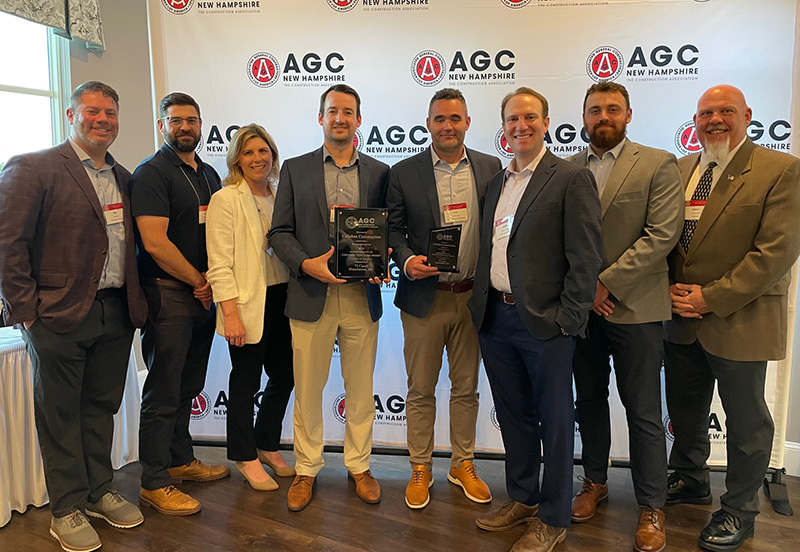News: Construction Design & Engineering
Posted: April 16, 2015
Intelligibility of in-building emergency communication systems
A mass notification system (MNS) is designed to clearly communicate with people during a catastrophic disaster or threat, steering them away from danger and toward safety. There are two MNS classifications: wide-area, providing real-time information to outdoor areas, and in-building, providing information and instruction to people inside a building by way of intelligible voice communications and often, visible signals, text, and graphics. This article will focus on a specific aspect of the in-building MNS, the voice communications of an emergency communication system (ECS) that provides fire alarm, public address, fire fighter, area of refuge, and elevator communications during an emergency. The National Fire Protection Agency (NFPA) provides code requirements for a MNS and ECS used for these purposes, as well as weather emergencies, terrorist events, biological, chemical, and nuclear emergencies, and other threats. The NFPA code referred to in this article is the NFPA 72 National Fire Alarm Code 2010 and 2013 editions.
The NFPA added two new terms related to building communications to its National Fire Alarm Code revision in 2010: acoustically distinguishable space (ADS) and speech intelligibility. An ADS is a space that is acoustically different from adjacent spaces and therefore requires a different approach to the design of the adjacent spaces: translated into code-speak, this space is "an emergency communications system notification zone, or subdivision thereof, that might be an enclosed or otherwise physically defined space, or that might be distinguished from other spaces because of different acoustical, environmental, or use characteristics, such as reverberation time and ambient sound pressure level." An example of an ADS could be a multi-story atrium adjacent to low-ceiling concourses. Speech intelligibility, as the name implies, is a measure of the actual understandability of speech when all factors (acoustics of the space, background noise levels, and sound system design) are considered. These terms have greatly changed the design of communication systems for buildings.
Prior to the National Fire Alarm Code 2010 and 2013 edition changes, fire protection engineers were required to design systems to be audible, which meant announcements were louder than the ambient noise in the space by 15 dBA (the logarithmic scale used to measure levels of sound). This design approach applied to all types of acoustic spaces and did not address the complexities of room acoustics, ambient noise control, and transducer (loudspeaker) selection, often resulting in audible announcements that were not intelligible.
Millions of people visit large, complex buildings such as transportation hubs, healthcare facilities, convention centers, and casinos every year. Emergency communications in these facilities must be clear to prevent panic, injury, and loss of life, particularly because the visitors to these types of buildings generally are not familiar with the facility and have difficulty finding a safe exit path without explicit instruction. To illustrate this point, let's consider what people might experience in an airport.
Travelers at an international airport arrive at an expansive four- or five-story open space in the main terminal that houses ticketing; security, international arrivals, baggage claim, and concourse areas with restaurants and retail shops may be in separate areas with lower ceilings and completely different architectural finishes. Each of these airport areas is an ADS, perhaps zoned into smaller ADSs depending on the architecture. The reverberation time and background noise level (ambient sound pressure level) are factors that must be considered by acousticians and designers during the design of the ECS in order to provide the specified level of intelligibility, a threshold determined by the Speech Transmission Index (STI) set forth by the International Electrotechnical Commission (IEC).
As an example, a traveler may arrive to acoustic bedlam in the main terminal due to the non-absorptive finishes throughout the terminal. The finishes cause a buildup of reverberant sound, making it almost impossible to understand a talker only a few feet away from a listener. The paging system is operational, but only adds to the background noise. The traveler cannot understand the announcements due to the high reverberation time and the poor location of loudspeakers. The high noise levels and inability to understand courtesy and information announcements only add to the travelers' anxiety. If a catastrophic event occurs, the traveler will not be able to understand the announcements.
Contrast that to a similar main terminal that is just as active but with generous absorptive finishes that provide a relaxing atmosphere, allowing the traveler to easily orient to his surroundings. The paging system has been designed to provide courtesy and information announcements clearly and at a conversational level. Emergency announcements are clear and concise, providing straightforward direction and guidance to the travelers.
The changes in the NFPA-72 National Fire Alarm Code 2010 and 2013 editions finally bring intelligibility to the forefront in the design of emergency communication systems. Designers and engineers working with the building owner and architect can optimize the acoustics and systems in each acoustically distinguishable space to provide clear, intelligible communications, often without increasing the cost of the systems significantly. The end result is a facility with intelligible communication systems that may reduce panic, injury, and loss of life during a crisis.
Richard Closs, CTS-D, is the director of the systems group at Acentech, Cambridge, Mass.
MORE FROM Construction Design & Engineering
Nobis Group awards Robinson and Moreira STEM scholarships
Concord, NH Nobis Group, a 100% employee-owned consulting firm specializing in engineering and environmental solutions across the Northeast, has named the recipients of its 2025 STEM Scholarship: Andie Moreira of

Columns and Thought Leadership

The design-build advantage: Integrated interior design solutions - by Parker Snyder
When it comes to corporate interior spaces for both commercial and industrial projects, partnering with a design-build firm with in-house interior design services can offer clients many benefits. Unlike traditional delivery methods where interior designers operate independently from the design and construction teams, often creating a longer project timeline as cost negotiations and revisions ensue

Ask the Electrician: Is summer a prime time for commercial electrical maintenance?
The answer is “Yes!” While January marks the official new year, many businesses view September as a fresh start. This makes summer an ideal time for commercial property owners to schedule long-term electrical maintenance projects.

The rise of incubators and co-working spaces: The latest in life sciences - by Matt Combs
In recent years, the life science industry has witnessed a shift in how companies operate and innovate. One of the key driving forces behind this transformation is the emergence of incubators and co-working spaces specifically tailored to meet the unique budget and schedule needs of startups.

Careers in Construction Month focus on training and safety - by Joe Camilo
October is Careers in Construction Month, and rarely has it been more consequential. According to our chapter’s national parent organization, the construction industry needs to attract half-a-million new workers in the coming year to meet demand. Addressing that need is a huge job, but we at ABC MA are trying to do our part.







